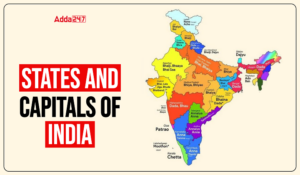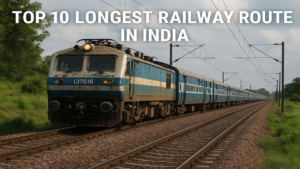10 Facts you must know about Chandrayan-3
Chandrayaan-3 has been launched at 2:35 P.M. from the Satish Dhawan Space Centre, Sriharikota, Andhra Pradesh carries by ISRO’s largest and most powerful rocket, the Launch Vehicle Mark III.
India aims at soft landing of Chandrayaan-3 on the Moon’s South Pole. If this mission is accomplished India will become the fourth nation to successfully complete the soft landing of spacecraft on the Earth’s Natural Satellite. And also India will become the first country in the world to land a spacecraft on the Moon’s South Pole.
Chandrayaan-3, is all set to make a soft and successful landing on the south polar region of the Moon around 6.04pm on August 23.
Here is the 10 Interesting Facts about the Chandrayaan-3:
- Chandrayaan-3 is a follow-on mission to Chandrayaan-2 which aims at soft landing at Moon’s south pole. It consists of a lander and a Rover which has been launched into the space by a rocket called LVM3 from SDSC SHAR, Sriharikota. While the Chandrayaan-2 which was launched in 2019 consisted of an orbiter, a Lander and a Rover, because of a software glitch the craft lost all communications just minutes before it was supposed to land and later it was crashed. Though it was not a complete failure, the orbiter is still functional and provides valuable data to the organization.
- The launcher used to support the moon lander Vikram is GSLV (Geosynchronous Satellite Launch Vehicle) also known as Launch Vehicle Mark III. The height of this launcher is about 5 metres.
- The spacecraft is expected to touch down on the moon on 23 August after a voyage that will last more than 40 days. The craft is set to land on the Moon’s South Pole, where Chandrayaan-1 discovered the molecules of water and shocked the world by its major success.
- ISRO has done some modifications to make it reliable than its predecessor. Chandrayaan-3 consists of a Lander Vikram, which is named after Vikram Sarabhai, the Rover Pragyan and a propulsion module. The weight of the Vikram Lander has been increased by 280kg from its previous version and it also carries more fuel to stay on it’s intended path to the Moon’s surface.
- The craft collectively weighs 3,900 kg in which the weight of the propulsion is 2148 kg and the weight of lander and Rover together is 1752 kg. This total weight is close to the maximum capacity of the GSLV MK III which is India’s strongest rocket.
- Chandrayaan-3 has three phases: the Earth-Centric Phase, the lunar-transfer phase and the Moon-Centric Phase.
The Earth Centric Phase involves the pre-launch phase and the Earth bound manoeuvre phase which will help the spacecraft to change its directions.
The Lunar-Transfer Phase involves the transfer trajectory phase which will help it to choose the path that will lead it towards the lunar orbit.
The Moon-Centric Phase involves all steps from lunar orbit insertion to landing.
- As Chandrayaan-3 safely lands on the moon, the Pragyan Rover will be deployed to explore. The Rover will be released from Lander using a ramp. This six-wheeled rover used in spacecraft is powered by solar energy and carries two spectrometers to study the composition of the moon’s surface. It will move around the landing area for about 14 Earth Days which is equivalent to one lunar day.
- Vikram Lander used in Chandrayaan-3 is equipped with four scientific instruments. The first one is seismometer designed to detect moonquakes, the second one studies how heat moves through the lunar surface, the third aims at understanding the plasma environment around the moon and the fourth one is retro-reflector which helps to understand the gravitational interaction between the moon and the planets.
- The lander will touch down on the moon’s surface with a horizontal velocity of less than 5 metre per second, a vertical velocity of less than two metre per second and a slope less than 120 degrees.
- To date only three countries have successfully achieved lunar landings: the United States, the former Soviet Union and China. India aiming to be the fourth country to safe landing on the Moon’s surface and first nation in the world to land on the Moon’s South Pole.










 States and Capitals - How Many States in...
States and Capitals - How Many States in...
 Top 10 Longest Railway Routes in India
Top 10 Longest Railway Routes in India
 Aizawl Becomes 4th Northeast Capital Lin...
Aizawl Becomes 4th Northeast Capital Lin...

